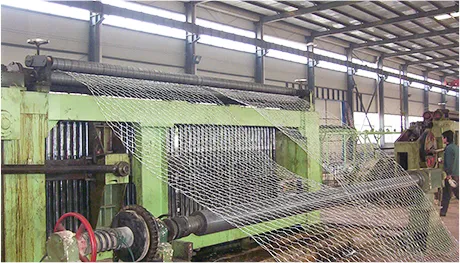-
 Phone:
Phone: -
 Email:
Email:

rockfall netting
Rockfall Netting An Innovative Solution for Slope Stabilization
Rockfall is a significant geohazard that poses risks to both infrastructure and human lives, particularly in mountainous and hilly regions. As natural processes such as erosion, freeze-thaw cycles, and seismic activity alter rock slopes, the potential for rockfalls increases. To mitigate this risk, one of the most effective strategies employed is rockfall netting. This method not only enhances safety but also preserves the environment, making it an essential consideration for engineers and environmentalists alike.
Rockfall netting involves the installation of high-tensile strength mesh nets designed to catch and contain falling rocks before they reach roadways, railways, or populated areas. This system acts as a barrier, preventing debris from causing damage and injuries. The implementation of rockfall netting is complemented by other engineering solutions, such as ditching, scaling, and monitoring systems, forming a comprehensive approach to managing slope stability.
One of the primary advantages of rockfall netting is its relatively low environmental impact compared to traditional methods like rock drilling or blasting. The installation process is less invasive, preserving the natural landscape and minimizing disturbance to local ecosystems. Moreover, using netting systems can help protect fragile environments by preventing rockfalls that could destabilize the terrain further and trigger more significant landslides or erosion.
There are various types of rockfall netting, tailored for different conditions and requirements
. For example, flexible mesh nets are often employed in areas where the rockfall potential is moderate, while heavier-duty, rigid systems are used in high-risk zones where larger boulders might fall. The choice of netting material is crucial; commonly used materials include galvanized steel, stainless steel, and high-performance polymers. Each material presents unique benefits in terms of durability, corrosion resistance, and tensile strength.rockfall netting

The design and installation of rockfall netting systems require careful analysis and engineering expertise. Factors such as the slope's angle, rock size, and frequency of rockfall events are crucial in determining the appropriate type and layout of the mesh. Additionally, proper anchoring systems must be employed to ensure the netting remains secured against the collected debris and dynamic forces exerted during rockfall events.
Maintenance is another vital aspect of rockfall netting systems. Regular inspections need to be conducted to assess the integrity of the netting, especially after significant weather events or seismic activities. Any signs of damage or wear should be promptly addressed to maintain the system's effectiveness. Over time, vegetation may grow on or around the netting, which can either aid in stabilization or create additional hazards. Thus, a balance must be struck between ecological preservation and safety.
Globally, the application of rockfall netting has seen success across various regions, from the rugged terrains of the Rocky Mountains in North America to the steep slopes of Europe and Asia. Case studies have demonstrated that when appropriately implemented, rockfall netting systems can significantly reduce the incidence of rockfalls, thus enhancing safety for highways, railroads, and communities living nearby.
In conclusion, rockfall netting is a practical and environmentally considerate solution for managing rockfall hazards. As climate change continues to exacerbate geological instability and extreme weather conditions, the importance of effective mitigation strategies like rockfall netting cannot be overstated. By ensuring safety while minimizing ecological disruption, rockfall netting stands as a testament to the advancement of modern engineering and environmental stewardship. As we move forward, continued research and innovation in this field will be critical to address the evolving challenges posed by our natural landscapes.
-
Wire Mesh for Every Need: A Practical SolutionNewsJul.25,2025
-
Steel Fences: Durable, Secure, and Stylish OptionsNewsJul.25,2025
-
Roll Top Fencing: A Smart Solution for Safety and SecurityNewsJul.25,2025
-
Cattle Farm Fencing Solutions for Maximum SecurityNewsJul.25,2025
-
Affordable Iron Binding Wire SolutionsNewsJul.25,2025
-
Affordable Galvanized Wire SolutionsNewsJul.25,2025
-
Wire Hanger Recycling IdeasNewsJul.25,2025








